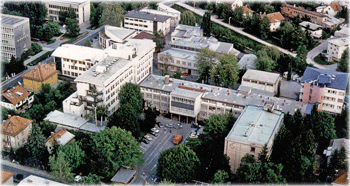Another article by the members of our community has been published: “A Slovene Translation of the System Usability Scale: The SUS-SI” in the International Journal f Human-Computer Interaction journal.
Abstract: The System Usability Scale (SUS) is a widely adopted and studied questionnaire for usability evaluation. It is technology independent and has been used to evaluate the perceived usability of a broad range of products, including hardware, software, and websites. In this paper we present a Slovene translation of the SUS (the SUS-SI) along with the procedure used in its translation and psychometric evaluation. The results indicated that the SUS-SI has properties similar to the English version. Slovene usability practitioners should be able to use the SUS-SI with confidence when conducting user research.
50 free e-prints available here.
SUS (original questionnaire):
- I think that I would like to use this system frequently.
- I found the system unnecessarily complex.
- I thought the system was easy to use.
- I think that I would need the support of a technical person to be able to use this system.
- I found the various functions in this system were well integrated.
- I thought there was too much inconsistency in this system.
- I would imagine that most people would learn to use this system very quickly.
- I found the system very cumbersome/awkward to use.
- I felt very confident using the system.
- I needed to learn a lot of things before I could get going with this system.
The anchors: strongly agree 1 2 3 4 5 strongly disagree
SUS-SI (Slovene translation):
- Menim, da bi ta sistem rad pogosto uporabljal.
- Sistem se mi je zdel po nepotrebnem zapleten.
- Sistem se mi je zdel enostaven za uporabo.
- Menim, da bi za uporabo tega sistema potreboval pomoč tehnika.
- Različne funkcije tega sistema so se mi zdele dobro povezane v smiselno celoto.
- Sistem se mi je zdel preveč nekonsistenten.
- Menim, da bi se večina uporabnikov zelo hitro naučila uporabljati ta sistem.
- Sistem se mi je zdel neroden za uporabo.
- Pri uporabi sistema sem bil zelo suveren.
- Preden sem osvojil uporabo tega sistema, sem se moral naučiti veliko stvari.
The anchors: sploh se ne strinjam 1 2 3 4 5 se povsem strinjam
Pre-filled Google forms (SUS and SUS-SI):
In a survey published not long ago, we found out that usability testing is not so widespread as it should be given its importance. So to jump start your usability evaluations, we’ve prepared Google forms with the questionnaires, both English (SUS) and Slovene (SUS-SI). Feel free to use them, just make sure to make your personal copy before (to keep this links clean).
Acknowledgements:
We’d like to thank all who contributed to the translation and validation of the questionnaire with comments and/or filling out the survey. Special thanks goes to James R. Lewis, author of Quantifying the user experience and many influential papers in the areas of usability testing and measurement. He ‘warmly replied to a cold email’ and helped a great deal with the psychometric validation of the translation and co-authored the paper. A truly beautiful academic experience.
Reference:
Blažica, Bojan, and James R. Lewis. “A Slovene Translation of the System Usability Scale: The SUS-SI.” International Journal of Human-Computer Interaction Vol. 31, Iss. 2, 2015.


